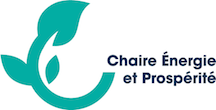Article published in Elements, an international magazine of Mineralogy, Geochemistry, and Petrology
The consumption of mineral resources and energy has increased exponentially over the last 100 years. Further growth is expected until at least the middle of the 21st century as the demand for minerals is stimulated by the industrialization of poor countries, increasing urbanization, penetration of rapidly evolving high technologies, and the transition to low-carbon energies. In order to meet this demand, more metals will have to be produced by 2050 than over the last 100 years, which raises questions about the sustainability and conditions of supply. The answers to these questions are not only a matter of available reserves. Major effort will be required to develop new approaches and dynamic models to address social, economic, environmental, geological, technological, legal and geopolitical impacts of the need for resources.
> Buy online the published article
Séminaire en présence d'Adam George (SOAS, University of London). Adam George présente un modèle macroéconomique SFC environnemental britannique intégrant émissions de CO2 et investissements verts de tous les agents économiques. Le modèle trimestriel analyse l'impact des politiques énergétiques selon le rapport capital vert/capital conventionnel. Quatre scénarios fiscaux verts sont testés (2022-2035) : taxe carbone, investissement...
Le laboratoire GAEL (Grenoble Applied Economics Laboratory) et la Chaire Energie et Prospérité organisent un workshop sur l’économie de la bioénergie les jeudi 9 et vendredi 10 octobre 2025 sur le campus universitaire de Grenoble.


